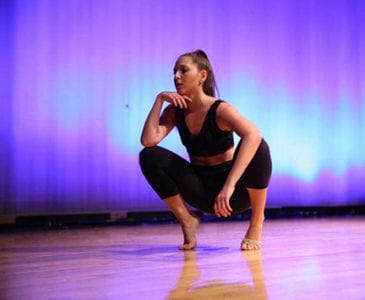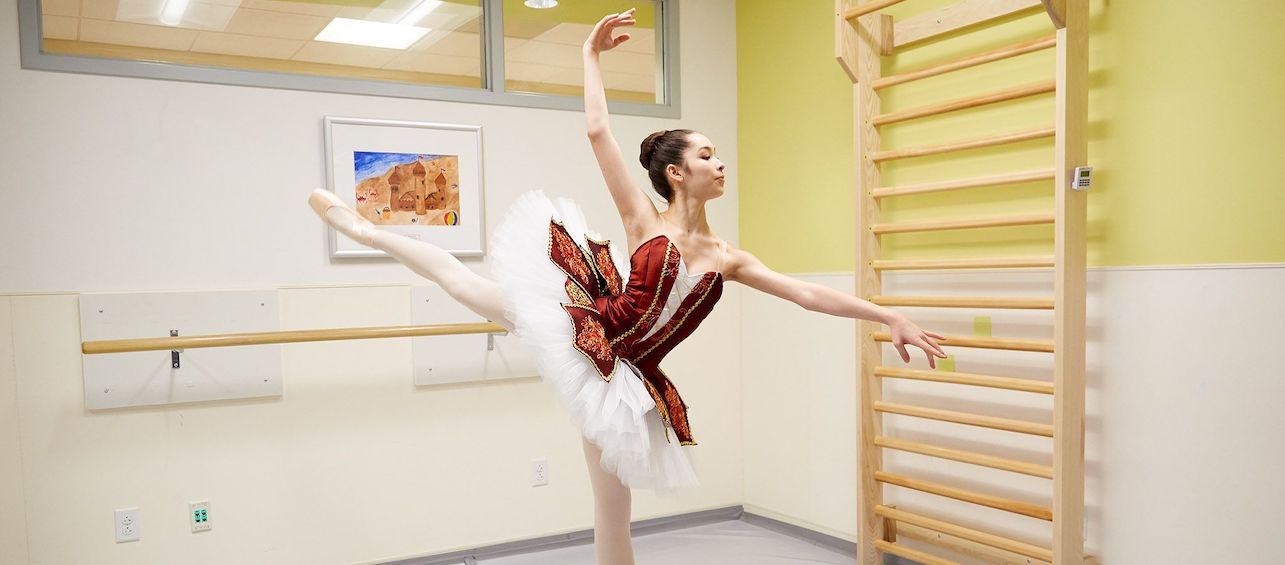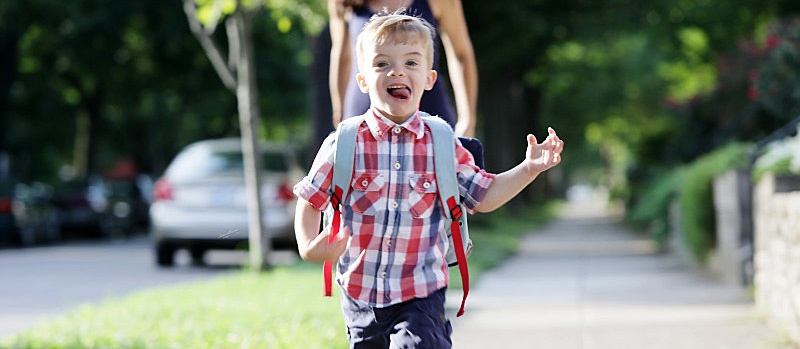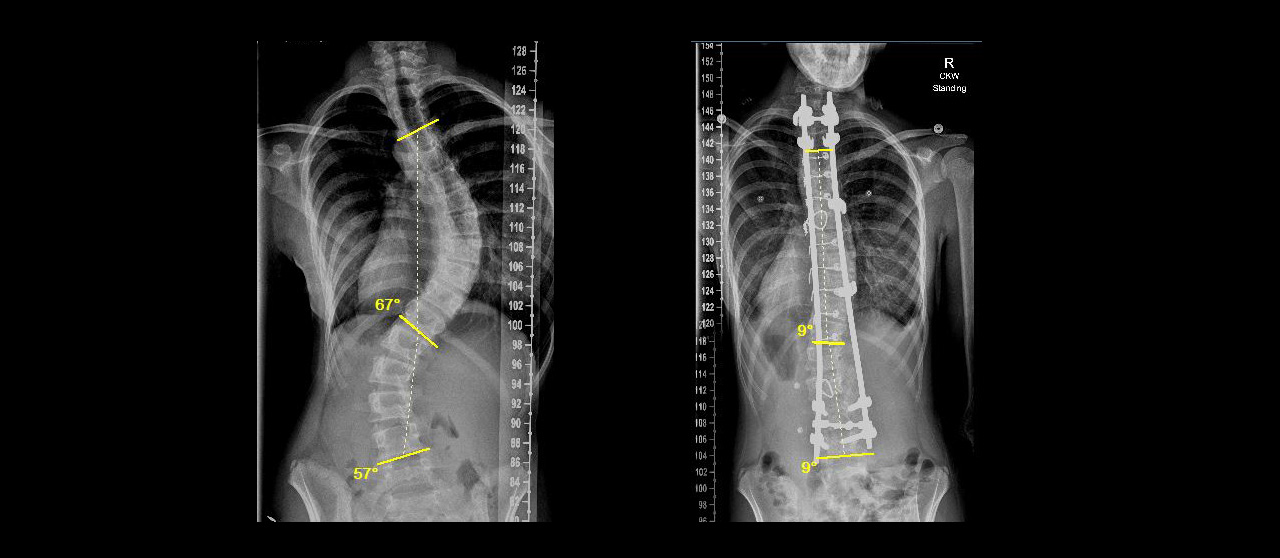When I was nine years old, my mom enrolled me in my first recreational dance class. She thought it would be a temporary hobby. One recreational class turned into nine years of competitive dancing, including countless out-of-town competitions and conventions. Not to mention hours of rehearsal, and sacrifices with my family’s time and money. Keeping up with dance became my passion in life, and that was something many people recognized as I grew older.
Diagnosed with Idiopathic Scoliosis, 32 Degree S Curve
However, what many people do not know or may not believe is that I was diagnosed with idiopathic scoliosis, with a 32 degree S curve, when I was eight years old. It may not appear now that my back was once at risk for deformation. However, I actually wore a scoliosis back brace for 10 years straight. That means that I wore a fiberglass back brace up until my senior year of high school.
When I was first diagnosed, there were two treatment options available. Surgery to correct the curve, or wearing a brace 23 hours a day. Although neither decision was desirable, my parents opted for the brace. Spine surgery seemed too drastic at the time, and my parents didn’t want me to have any physical limitations as a kid. My team of doctors at the Crawford Spine Center decided I would try the brace out for a while. If it didn’t look like it was helping, surgery would still be the only other option.
Fortunately, choosing the brace allowed me to continue dancing. Surgery would have involved a six-hour procedure (on average) utilizing screws and rods to correct my curve and straighten my spine. If I had surgery, I am confident I would have had to go through heavy physical rehabilitation and it would not have been possible for me to dance at the level and intensity that I did. I would have been limited in my range of movement, which can be very discouraging for a dancer.
What the brace was like
Wearing the brace, while preferable to surgery for me, definitely had its challenges. The brace was made out of fiberglass—making it bulky and extremely noticeable under clothes. When I was fitted for it, it felt and looked like papier-mâché being placed on my body. It was about ¼ to ½ in thick. As I would grow, I would get a new brace to fit my body. I think I had three in total.
It took some getting used to. As an adolescent and teen, I tried to hide it as much as possible with what I was wearing. It was bulky, the straps were noticeable, and people always asked questions about it. This made me feel uncomfortable and insecure to talk about my back for a long time. During the summers (especially when school was in session), I would sweat profusely while wearing the brace and extra clothes with it. I had to learn not to be insecure about it.
Initially, I had to wear the brace for 23 hours a day. I did this up until approximately sixth grade. In middle school, I was given a new brace and was able to be out of it for five hours a day. However, when I started high school, my back finally started to mature. This made me more at risk for developing a worse curve. My doctor wanted me back in it as much as possible and encouraged me to keep dancing to strengthen my back. I went back to wearing it around 23 hours a day—only taking it off for dance and around friends.
Getting the brace off
So essentially, when I wasn’t dancing, I was wearing the brace. As I got into the later years of high school, and I stopped growing, I was able to wean off the brace. I would only have to wear it at bedtime.
Finally, in September of my senior year, my doctor reviewed my X-ray and determined that I didn’t need to wear it anymore. Bracing had been a part of my entire childhood, and it felt completely surreal that I would not have to have this condition affect my livelihood anymore.
Attending College Without the Brace
While I was ecstatic to not have the brace anymore, it took a long time and a lot of effort to get used to not having that back support. Without it, I had a lot of pain and felt like my back was crashing in on itself. So I had to develop adequate core and lower back strength to counter-balance it.
The 10 years was all worth it when I realized I could go to college without the brace. As an engineering major, I was so thankful that bracing was one less thing on my mind. I had a new challenge to push through, and fortunately I found my way back to dancing to relieve stress.
Dancing Was My Outlet
Dancing has and will always be my outlet. My release. It has helped me both mentally and  physically at every stage of life. When I was an adolescent and teen, I danced to take my mind off of the frustrations, insecurities, and lack of self-confidence I had from wearing the brace. In college, I danced to relieve my anxiety, have a creative outlet, and make great friends by joining multiple dance clubs. I have grown more confident and proud of myself for keeping up with something that meant so much to me when I was younger.
physically at every stage of life. When I was an adolescent and teen, I danced to take my mind off of the frustrations, insecurities, and lack of self-confidence I had from wearing the brace. In college, I danced to relieve my anxiety, have a creative outlet, and make great friends by joining multiple dance clubs. I have grown more confident and proud of myself for keeping up with something that meant so much to me when I was younger.
Thanks to my family, friends, and doctors, I will never forget my scoliosis experience. It pushed me to be the hard-working person and dancer that I am today. This past May, I graduated from Ohio State with a degree in chemical engineering. I’m moving to Texas to start a new chapter of my life, with a full-time job and plenty of panic to go with it. I’m not sure what the future holds, but I’m empowered to continue dancing in whatever way I can, educate on scoliosis awareness, and reach out to scoliosis patients to help them through their condition.
To learn more about our Crawford Spine Center, please call the spine nurses hotline at 513-803-2750 or submit an online form




